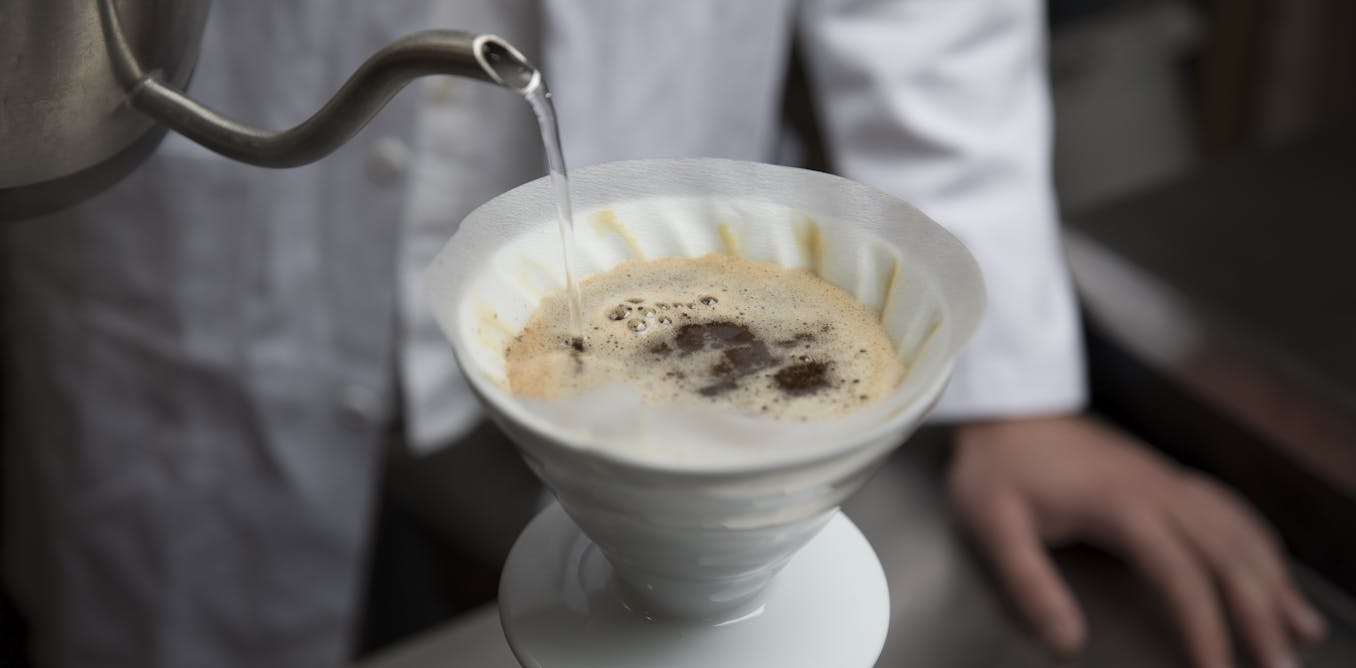The Science Behind Brewing a Perfect Cup of Coffee
Core Concepts
The author argues that the quality of coffee brewed at home versus in a cafe is influenced by the understanding and application of chemistry and physics principles. By controlling variables like temperature, water chemistry, particle size distribution, and more, a reproducible and tasty cup of coffee can be achieved.
Abstract
Brewing a great cup of coffee involves mastering various factors such as water chemistry, grind size, brew method, and freshness. The article delves into the impact of these variables on the taste and quality of coffee brewed at home versus in a cafe. Understanding the science behind brewing can help enthusiasts optimize their coffee-making process for a better experience.
Brewing a great cup of coffee depends on chemistry and physics
Stats
"Concentrations outside of these ranges are challenging to execute."
"An espresso machine can produce a beverage of this concentration: the Americano."
"A higher particulate temperature means that more of the tasty compounds trapped within the coffee particulates will be extracted."
"Brew water containing low levels of both calcium ions and bicarbonate (HCO₃⁻) – that is, soft water – will result in a highly acidic cup."
"Roasted coffee contains a significant amount of CO₂ and other volatiles trapped within the solid coffee matrix."
Quotes
"There are many ways to achieve a drink containing 1.2 to 1.5 percent coffee."
"Optimization of filter coffee brewing is multidimensional and more tricky than full immersion methods."
"The acidity of your brew water can have a big effect on your cup's taste."
Key Insights Distilled From
by Christopher ... at theconversation.com 09-27-2017
http://theconversation.com/brewing-a-great-cup-of-coffee-depends-on-chemistry-and-physics-84473
Deeper Inquiries
How do different brewing methods affect the final taste profile?
Different brewing methods impact the final taste profile of coffee in various ways. For instance, full immersion systems like French press or Aeropress result in a higher particulate temperature, leading to more extraction of flavorful compounds from the coffee grounds. On the other hand, flow-through systems such as pour-over or siphon rely on grind size and water-to-coffee ratio to control brew time and extraction. These methods offer a more complex flavor profile due to varying extraction rates based on particle size distribution and water flow dynamics.
Is there an ideal grind setting for maximizing flavor extraction?
The ideal grind setting for maximizing flavor extraction is subjective and can vary based on personal preference. Some advocate for grinding coffee as fine as possible to increase surface area and extract delicious flavors at higher concentrations. Conversely, others recommend a coarser grind to minimize the production of fine particles that may introduce negative flavors into the brew. Ultimately, determining the best grind setting depends on individual taste preferences and desired flavor profiles.
How does water chemistry impact the overall brewing process?
Water chemistry plays a significant role in influencing the overall brewing process and ultimately affects the taste of brewed coffee. The acidity of brew water can significantly impact the acidity level of coffee; soft water results in a highly acidic cup while hard water produces a chalky taste by neutralizing flavorful acids in coffee. Ideally, using water with balanced chemistry is preferred for optimal brewing outcomes. Additionally, bicarbonate concentration in water can have profound effects on flavor perception – even small changes can lead to noticeable differences in taste quality when brewing coffee.
0
